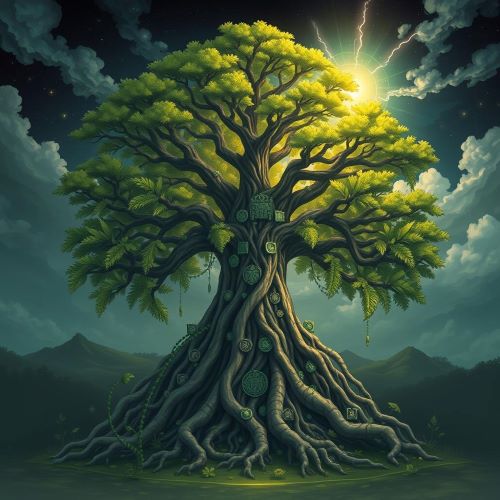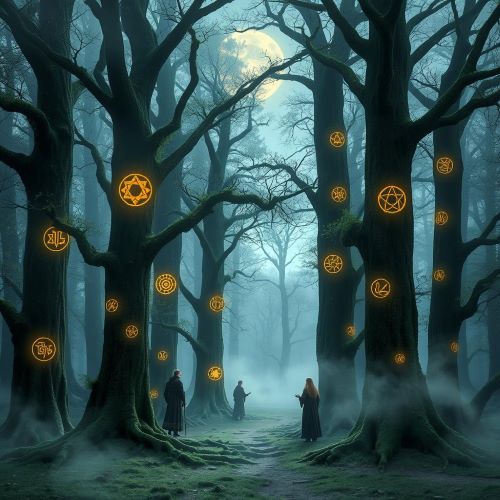The Mystical Balete Tree: Guardian of Philippine Folklore
The Balete tree, known scientifically as Ficus balete, holds a significant place in Philippine mythology and folklore. This majestic tree, often found towering in rural landscapes, is deeply intertwined with supernatural beliefs, legends, and spiritual practices. Considered both mystical and eerie, the Balete tree is regarded as a dwelling place for spirits, deities, and enchanted beings. Its importance in Philippine culture extends beyond myths and legends, influencing traditions, rituals, and even modern superstitions.
The Balete Tree as a Sacred and Supernatural Entity
Throughout the Philippines, the Balete tree is believed to be the home of mystical creatures such as engkanto (nature spirits), diwata (fairies), and kapre (a cigar-smoking giant). Many Filipino communities hold deep respect for these trees, avoiding unnecessary disturbance for fear of angering the supernatural entities residing within them.
One of the most well-known beliefs is that Balete trees serve as portals to the spirit world. It is said that spirits can cross between dimensions through these trees, making them important sites for shamans, or babaylan, to communicate with the unseen. In some provinces, rituals are performed before approaching or cutting down a Balete tree to seek permission from the spirits, lest misfortune befall those who disrespect them.
Balete Trees in Famous Philippine Myths and Legends
The Balete tree appears in numerous local legends across the archipelago. One of the most famous is the tale of Maria Makiling, a diwata who is believed to inhabit Mount Makiling in Laguna. Some variations of the story claim that she often appears near ancient Balete trees, further reinforcing the tree’s association with magical beings.
Another popular tale speaks of the White Lady of the Balete Tree. In different regions, particularly in Siquijor and Quezon, there are stories of spectral women seen standing near Balete trees at night. These ghostly apparitions are said to be either restless spirits or diwata appearing to mortals.
In Baguio City, the infamous Laperal White House is rumored to be haunted, with its ghostly legends tied to the presence of a nearby Balete tree. Similarly, in the province of Quezon, the town of San Antonio is home to a massive Balete tree called the Millennium Tree, which is believed to be more than 600 years old. Locals claim it harbors spirits, and many visitors experience a mysterious aura when standing beneath its canopy.
The Balete Tree in Philippine Spiritual Practices
Shamans and healers in the Philippines often use the Balete tree in their rituals and healing practices. The tree’s roots, bark, and leaves are believed to possess medicinal and mystical properties. Some traditional healers, or albularyo, perform rituals beneath Balete trees to summon spirits for guidance or assistance in curing ailments.
In some regions, people tie ribbons or small offerings to the branches of a Balete tree as a way to ask for favors from spirits. These practices are similar to the “wish trees” found in other cultures, demonstrating the universal belief in sacred trees as mediators between humans and the divine.
Additionally, certain Balete trees are associated with curse removals and exorcisms. Shamans claim that malevolent spirits or sorcery-induced ailments can be neutralized through rituals performed at these trees, emphasizing their spiritual importance.
Modern-Day Influence of the Balete Tree in Filipino Culture
Even in contemporary times, the Balete tree continues to play a role in Filipino culture. Superstitions related to the tree persist, and many Filipinos still adhere to the belief that one must say “tabi-tabi po” (excuse me) when passing a Balete tree to avoid disturbing unseen spirits.
Moreover, the tree has inspired Filipino literature, horror films, and urban legends. Movies such as “Shake, Rattle & Roll” and “Tiyanak” feature Balete trees as eerie locations where supernatural events unfold. Some Filipino authors also incorporate Balete trees into modern fantasy novels, reinforcing their mystical reputation.
In urban areas, some large Balete trees are preserved despite development projects due to their legendary status. For example, in Balete Drive, Quezon City, a famous road named after the tree, ghost stories abound, particularly about a phantom white lady appearing to motorists at night. This has contributed to the street’s eerie reputation and status as a staple in Philippine horror folklore.
Conclusion
The Balete tree remains a powerful symbol in Philippine mythology, folklore, and culture. Its reputation as a sacred and supernatural entity has stood the test of time, continuing to influence modern beliefs and traditions. Whether seen as a gateway to the spirit world, a dwelling for enchanted beings, or a source of mystical energy, the Balete tree is an enduring testament to the rich mythological heritage of the Philippines.
For those who explore Philippine folklore, the Balete tree is more than just a tree—it is a bridge between the mystical and the mortal, a reminder of the unseen forces that shape Filipino traditions and beliefs. As long as these stories continue to be told, the legacy of the Balete tree will live on, its roots deep in the heart of Philippine mythology.










